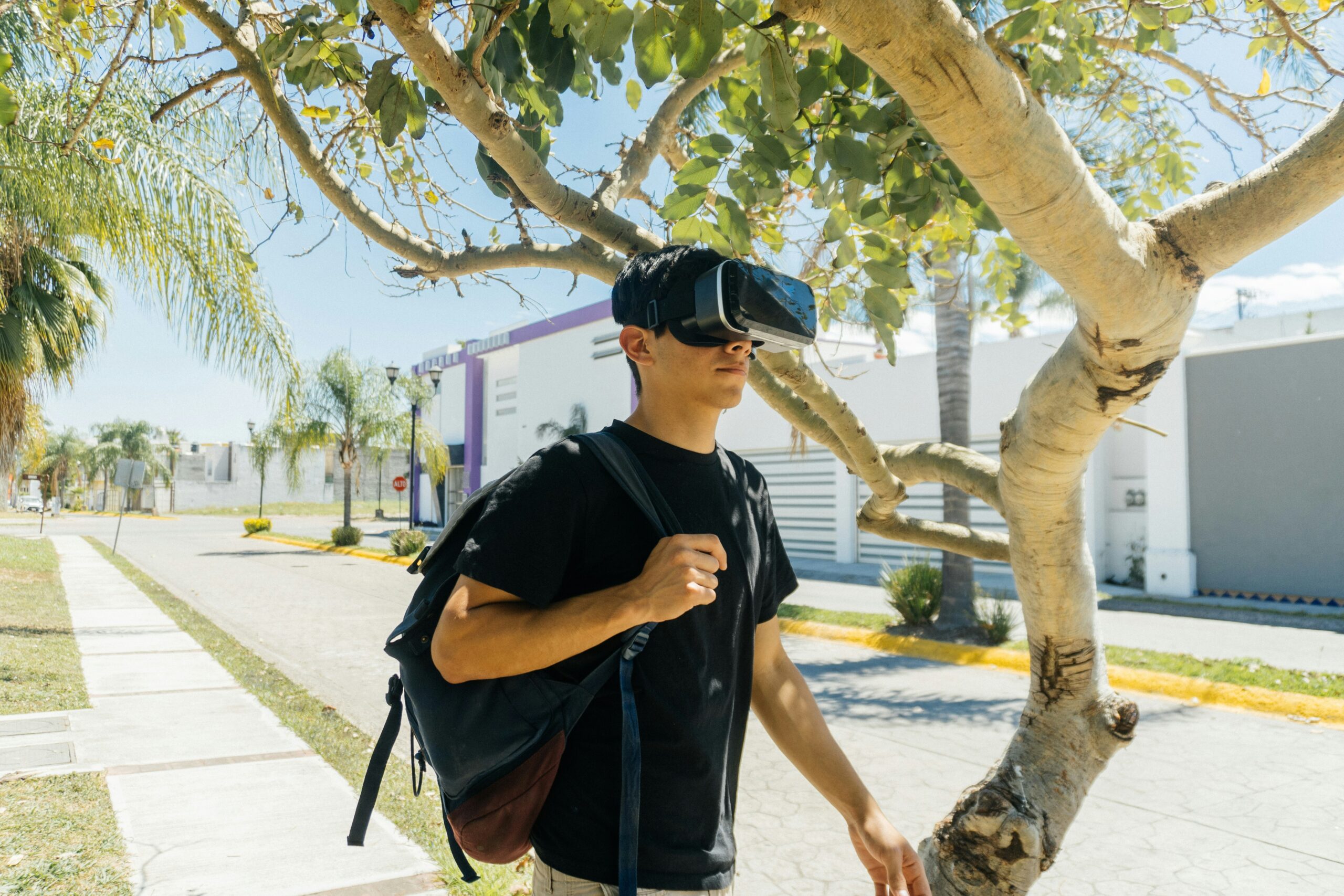
Virtual reality (VR) is an immersive technology that allows users to experience digital environments as though they are physically present. Whether you’re a gamer, a professional in a specific field, or just curious about the possibilities, VR offers a vast world of exploration. This guide will help you get started with VR by explaining the basics, required equipment, and how you can enjoy the experience from home.
What is Virtual Reality?
Virtual reality is a technology that simulates a 3D environment using software. This environment can be interacted with in real time through specialized hardware, like VR headsets and controllers. VR can simulate a wide range of experiences, from gaming and entertainment to virtual tours of museums or even remote working in virtual spaces.
For a successful VR experience, it’s essential to understand the immersive nature of VR. This technology tricks your senses into believing that you are present in a digital world. The feeling of immersion is achieved through the use of visual, auditory, and sometimes tactile feedback. The more realistic the simulation, the more you feel like you’re “living” within the virtual world.
Essential Equipment for Virtual Reality
To start using VR, you need a few key pieces of equipment. First and foremost, you’ll need a VR headset. These headsets come in a variety of styles and price points. Popular models include the Oculus Quest 2, PlayStation VR, and HTC Vive, all of which offer different features suited for various users.
In addition to the headset, you’ll need controllers to interact with the virtual environment. Most VR systems come with hand controllers that let you manipulate objects, press buttons, or even perform physical actions like swinging a sword or grabbing objects.
Some advanced VR systems require a high-powered computer or console to run the VR content, while standalone headsets like the Oculus Quest 2 don’t need external devices. However, if you want the highest level of performance, especially for gaming or professional uses, investing in a powerful computer might be necessary.
Setting Up Your Virtual Reality System
Setting up your VR system is a relatively simple process, but it can vary depending on the hardware you choose. For standalone headsets, simply put on the device, configure basic settings like your play area, and start exploring.
For tethered systems that connect to a PC or console, the setup involves connecting the headset to the device, calibrating sensors, and ensuring that your computer or console meets the necessary specifications for smooth VR operation. Many VR systems come with setup guides that provide step-by-step instructions to help you through the process.
When preparing your play area, it’s crucial to clear enough space to move around. Some VR games and applications require standing or walking, so it’s best to have at least a 6×6-foot area free of obstacles. Additionally, ensure that the space has proper lighting to avoid sensor issues, but not too much light to prevent glare.
Exploring Virtual Reality Content
Once your system is set up, it’s time to explore VR content. The most popular applications for VR are gaming and entertainment, but the possibilities are virtually endless. Virtual reality games immerse players in 3D worlds where they can interact with characters, environments, and objects in real time.
For entertainment, VR lets you watch movies or experience 360-degree videos. You can attend virtual concerts or explore virtual recreations of real-world landmarks. There are also educational apps that take you on virtual field trips or allow you to learn new skills, such as architectural design or complex scientific concepts.
Apart from entertainment, VR has many practical applications in industries like healthcare, real estate, and architecture. For example, medical professionals use VR to practice surgeries or conduct patient simulations. Companies also utilize VR for employee training, as it allows users to engage in lifelike, risk-free scenarios.
Tips for Getting the Most Out of Your VR Experience
To get the most out of your VR setup, consider these tips. First, take breaks regularly. VR can be an intense experience, and long sessions can cause eye strain, dizziness, or motion sickness. Short breaks will help prevent these issues.
Next, experiment with different VR apps and games to find what you enjoy most. VR is a highly interactive experience, and the more you explore, the more you’ll discover. There are apps for fitness, socializing, and even mindfulness, making VR a versatile tool.
Another tip is to keep your VR space safe. Since you’ll be moving around, it’s essential to clear your area of obstacles, especially sharp or breakable items. Many VR systems include a boundary system to help you stay aware of your surroundings. Be sure to activate these features to stay safe while exploring virtual worlds.
Virtual reality is an exciting and evolving technology that brings immersive experiences right to your doorstep. Whether you’re using it for gaming, education, or professional development, VR offers something for everyone. With the right equipment, setup, and content, you can explore vast new digital landscapes and engage with technology in ways you’ve never imagined before. By following the steps outlined in this guide, you’ll be well on your way to enjoying all that virtual reality has to offer.